#source: national geographic
Explore tagged Tumblr posts
Photo
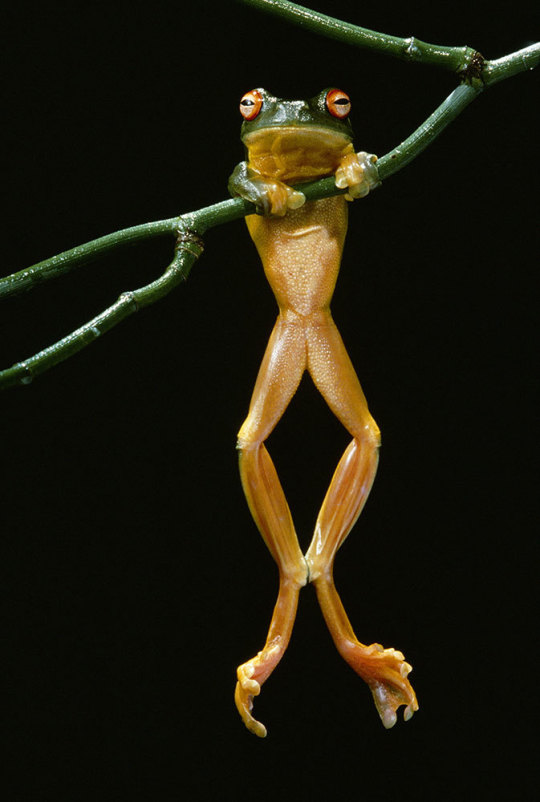
A red-eyed tree frog clutches a branch in a rainforest in Australia. Frogs are challenged by the climate crisis, pollution, and a deadly fungus—exacerbated by Europe's demand for their legs. Conservationists say the EU should do more to help regulate the trade and protect species.
SCIENCE SOURCE
#science source#photographer#national geographic#red-eyed tree frog#frog#rainforest#australia#animal#amphibian#nature
554 notes
·
View notes
Text
TRAUMATIZED
Death: Little one, explain to me why you are acting strange as of late- Hannah: I don’t want to talk about it! It’s better if I kept it a secret so no one else feels the way I do. Death: I have faced many horrors that would paint Lucifer’s darkest nightmares haunted, so trust that I give you my word that whatever it is, I will not be so easily- Hannah: I saw Lilith and Samael having sex. Death:

Later… Strife: So, did you ever find out what was bothering the ki- Death: WE WILL NOT SPEAK OF IT!
#incorrect quotes#darksiders#darksiders death#darksiders strife#@hannah-the-red-head#darksiders lilith#both were traumatized#they were like two wildebeests on a National Geographic special#source: that 70s show#incorrect darksiders#MY EYES!!#darksiders funny
52 notes
·
View notes
Text
Did you know that dolphins have names for each other?

These intelligent marine mammals use unique whistles to communicate and identify themselves within their pods! 🐬🌊
#DolphinFacts#MarineLife#AnimalCommunication#OceanWonder#DidYouKnow#CetaceanConnections#NatureFacts#Curiosity#MarineBiology#WhaleWatch#WildlifeWednesday#UnderwaterWorld#ScienceIsCool#Oceanography#MarineResearch#EcoFacts#EducationalContent#MarineConservation#OceanExploration#AquaticLife#LearnAndExplore#FunFacts#AnimalBehavior#OceanAnimals#DolphinLanguage#Source: National Geographic"
2 notes
·
View notes
Text
my mom decided we should do “‘vision boards’” for the new year and i actually had fun making this lol


#ashamed of my sources for these images tho. it’s all like new yorker national geographic scientific american etc 😖#idk i just don’t like that. but hey!#also face reveal ig. (even tho my lb is linked in my profile and i have my face on there but whatever)
6 notes
·
View notes
Text
1. Mycena lucentipes, Brazil. May 2014 issue. Photo by Taylor F. Lockwood. 2. Eruption on Kīlauea, Hawaiʻi. November 1983 issue. Photo by Steve Raymer. 3. Off the coast of South Georgia. March 1989 issue. Photo by Frans Lanting. 4. Cheetah cubs in Kenya. January 2005 issue. Photo by Anup and Manoj Shah. 5. Arctic wolf, Ellesmere Island. May 1987 issue. Photo by Jim Bradenburg. 6. Petals of an orchid. July 2002 issue. Photo by Jonathan Blair. 7. Thunderstorm over Ardmore, Oklahoma. June 1987 issue. Photo by Gene Moore. 8. Psilothrix beetle in Bardenas Reales, Spain. April 2012 issue. Photo by José Antonio Martínez. 9. Phyllodesmium iriomotense. June 2008 issue. Photo by Jennifer Hayes. 10. Waimanu Valley, Hawaiʻi. December 2002 issue. Photo by Adriel Heisey.
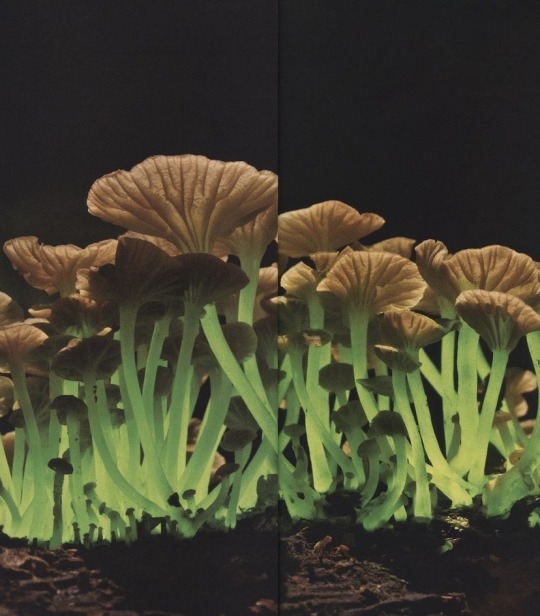


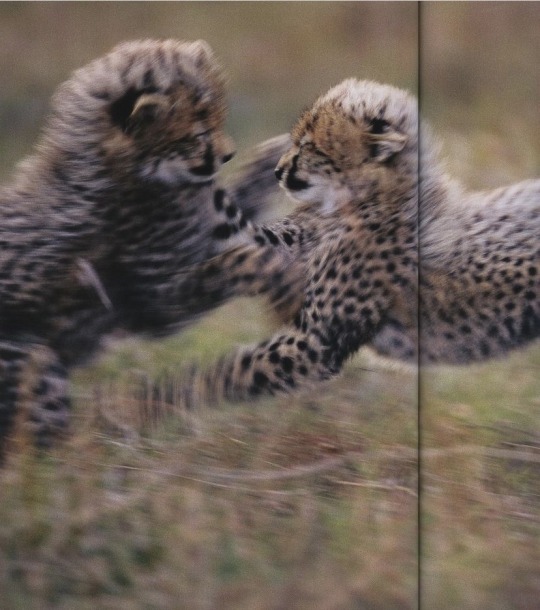



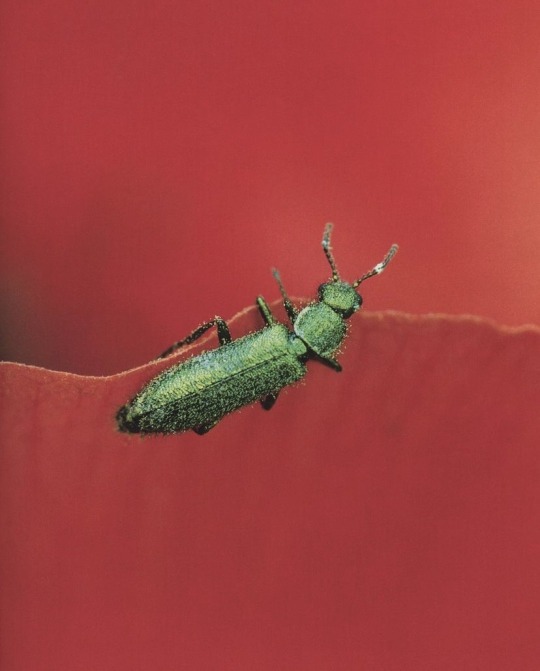


Various National Geographic Magazine Scans.
#source found#photography#national geographic#multiple images#frans lanting#jim bradenburg#taylor lockwood#steve raymer#anup shah#jennifer hayes
5K notes
·
View notes
Text
watching a quote unquote big cat olympics doc
but they fell into the pitfall of most grading metrics these days
the tests were one-size-fits-all, and the rules were almost entirely arbitrary compared to what would actually be useful as a big cat predator nevermind to that specific species at all
one of em isn't even a Big Cat... muttergrumble...
#witness the day my two sources were Wikipedia and YouTube#3 v 1#national geographic what is this bizarre game show malarkey#why do i need to go to YouTube to get the real facts with actually knowledgeable sources and writers#idc if they say it in some other show so don't even tell me#just no reason for it with their purported educational value
1 note
·
View note
Text
Damian Wayne : *Watching national geographic. Global warming hurts animals.*
"Mhhh."
*Runs to Tim's room*
"Luthor said you won't find a clean and sustainable power source in your life."
*Slams doors. Leaves.*
Timothy Jackson Drake : "THAT BITCH." *Angry tools noises coming from the garage for 5 minutes* "Take that bald motherfucker !"
Stephanie : "It's been 5 years and I'm still not sure if i'm scared or impressed by you all."
SaDamian : "Penguins won't fall anymore."
#batman#batfamily#batfam#batman headcanon#dc comics#damian wayne#dc robin#robin#stephanie brown#dc spoiler#tim drake#red robin#lex luthor#batkids#batfamily shenanigans
9K notes
·
View notes
Text
https://www.washingtonpost.com/media/2023/06/28/national-geographic-staff-writers-laid-off/

Sorry to everyone who’s enjoyed the last 130 years of science and culture journalism, but Disney needs the money to fund Toy Story 9
#wow#this is so sad#i remember in primary school we had a lot of national geographic magazines in the library#and my friend and i went at least once a week (some weeks even every day) to look at them and take notes so we could play scientists with a#actual scientific base#we always said my friend would become a biologist and i would become an archaeologist so we could make our own national geographics#i did end up becoming an archaeologist#i never changed my mind ever since then when i was 8 years old until i graduated uni with the highest grade of the archaeology promotion#and an important part of that comes from having seen the national geographics in school!#it's sad... it has inspired so many generations#but guess it's all about money. that's why the nat geo tv channel airs those bs pseudoscience ancient aliens kind of shows#using their good name and the reputation as a valid source for outreach they have to further anti-science beliefs just for money#that was already such a betrayal#this is where lots of journalism is heading though since now we don't buy the newspapers and magazines any more and expect them to be free#but still have workers to make it who need to get paid
122K notes
·
View notes
Text

The king protea is the national flower of South Africa. It is also the flagship of the Atlas Protea Project, run by the South African National Botanical Institute. The king protea has several color morphs and horticulturists have recognised 81 garden varieties..
also read beautiful story👇 https://caaox.com/nature/aquatic-life/
source: Earth Geographic
430 notes
·
View notes
Text
Arcane Team's Bias Bastardized Piltover and Zaun
I am not an LoL player, but I read up on the lore because I was that fucking disappointed in season 2. Some key points of original Piltover and Zaun lore, which the team kept parts of. Emphasis on parts.
Geography and Symbiotic Economy:
Zaun was established first. A geographic disaster literally split the earth and sunk part of the city, splitting it into what we know today. Many of the wealthier citizens and those involved in the profitable sea trade ended up on a cliffside and industrial parts of Zaun were now across a river and below. They then became separate city-states in a symbiotic relationship.
"Zaun thrives, its people vibrant and its culture rich."
Zaun has multiple levels of "good" areas like the college and Bridgewaltz market where both citizens shopped for music, food, technology in addition to progressively more polluted and dangerous lower levels.
Piltover’s wealth has allowed Zaun to develop in tandem
Zaun's issues like the Gray were attributed to their own factories and labs that benefitted their own people
Culture and Relationship:
Zaunities collectively take great pride in themselves and their thriving city. Many choose to live there, especially scientists and inventors who find Piltover too restricted, because "their right to do as they please is what makes Zaun the freest city-state on Runeterra"
"A citizen of Piltover is typically self-reliant, does not expect handouts, and always aspires to do better."
Piltover has an elected "very empathic and progressive" government and is "one of the least militarized city-states"
Zaun's technological progress and academic institutions are described as being Piltover's only technological and academic rival.
Both cities' citizens augment their bodies. Piltover's are more flamboyant and display their wealth, even if they are originally necessary; Zaun's are more practical and "necessity is the mother of invention" very much applies.
So this was what they had to work with. I can understand why many people would prefer to live in Piltover, but Zaun is treated as an equal place to be, with its own distinct and proud culture, complex structure, and thriving economy.
Moving on to Arcane (finally lol) and the now infamous original Arcane pitch. Either Christian posted that while every sane person was asleep, or none of them realized how profoundly terrible it makes them look.

There's a lot in here that's problematic. Piltover is a gleaming wonder, a pure and magical place while conveniently leaving out why its this flourishing utopia. The next bit frames the entire conflict as Piltover's decision. It screams "Mommy and Daddy need to punish the naughty kids or they'll wreck the house." Except the starving kids are locked in the moldy basement and trying to break the door down to escape.
Now about Zaun...here its called the underground district. This becomes more important later, when you realize how many different and contradictory labels they give Zaun. Its an undercity, sister city, part of Piltover, wannabe Nation of Zaun. It establishes again the underlying superiority of Piltover. And of course it is, because Zaun's people are boiled down to dangerous, manipulative criminals (bonus points for an antisemetic reference!) with no morality.
I firmly believe this team has a fundamental deliberate misinterpretation of what LoL Piltover and Zaun are, and it is due to their own biases and privileges of a team that is primarily white, middle/upper class, able-bodied, and mostly male. It is abundantly clear that they see as Zaun is objectively lesser and that its their own fault. They're just a foil for Piltover and source of enemies. Three quotes from Arnaud-Lois Baudry:
"My role as a Production Designer was to make sure we don't negatively impact other teams at Riot Games and contribute to adding value and enriching the worldbuilding of those cities."
"Once we figured out the shape language of the wealthy city of Piltover, Zaun needed to be its dark mirror. We started by combining Victorian architectural pieces and some old industrial elements and added some asymmetrical flourish ornaments made from handcrafted upcycled pieces."
"Canonically Zaun is supposed to be super-dark, oily, and dirty with green smoke everywhere." Dude it is literally called The Gray. Zaun's marketplace, college, and an example of their architectural style from the LoL website:

Zaun is literally an afterthought. And I think its very telling that once again, Piltover was the priority. Magical, pure Piltover with its moral code...and Zaun was literally just designed to be its opposite. They claim that the show was designed to show the good and bad parts of both, but they failed to include any direct evidence that the problems in Zaun are entirely due to Piltover's treatment of them. They literally just took LoL Zaun, scooped the top (more prosperous) levels off, and buried it under Piltover. Piltover was enriched, and even benefited by inspiration from Eastern European culture like Nikola Tesla and Czech artist Alphonse Mucha. And then gave Viktor the only "foreign" accent in the show to further emphasize his disadvantaged upbringing and displacement in Piltover society. As someone with an Eastern European/Slavic background, I cannot emphasize this enough: fuck. every. last. one. of. you.
*sigh* Moving on to the "value and enrichment" given to Zaun:
cities described as "dissonant halves of the a greater whole" rather than symbiotic
Piltover came first, and the undercity later develops into Zaun. No mention of historical or present-day Zaun having anything to do with Piltover's success. Literally nothing is explicitly connected, though we do get Cait committing war crimes using tech her Mom installed to help the Zaunites from suffering the effects of pollution.
Speaking of pollution, AoA explictly states neither city has "big industry, there are no factories". Uhh then where is the pollution coming from?
It is portrayed unflatteringly with two notable exceptions (the Last Drop and Firelight tree), specifically in the ways that are in real life associated with racism, classism, body shaming, and cultural shaming. Its subtle at times, but a constant theme in their book, interviews, and the show itself.
In AoA, the Piltie extras are "understudies" and the Zaunites are "a motely crew".
Piltover has “normal” food like tea and sandwiches, while Zaun has what appears to be slugs in a muddy sauce from an unsanitary food stall that also displays drooling animal heads and tentacles.
All the Pilties are thin; the only overweight people (who are also usually morbidly obese) are from Zaun.
In Art of Arcane (AoA) they talk about how they specifically chose to design the Chem-Barons "more cartoony than grotesque" and that they made sure to have "a few landmarks, like the bridge, so it doesn't feel too cartoony" when designing Piltover.
Only the Zaunites use augmentation. Its a defining characteristic and objectively "bad". AoA explicitly correlates Viktor fixing his leg and spine with losing parts of his humanity. Lord know what they think of the multitude of augmented-out-of-necessity Zaunites. Coincidentally, the other character most associated with augments is Smeech, the cartoony drowned-rat-looking antagonistic Yordle, whose fight serves as a humorous scene endearing Jinx to the viewers.
They created the Piltover Council and then decided to make the Chem-Barons their direct counterparts, because DUALITY! Seriously, is anyone in Zaun NOT somehow just a "worse" version of a Piltie?

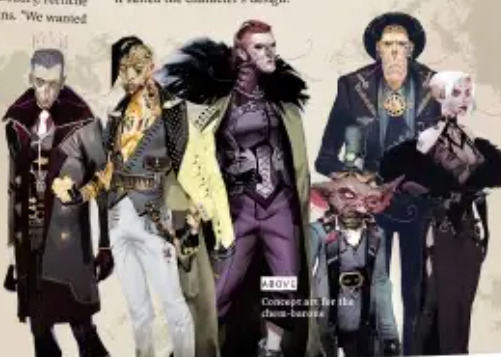
#arcane zaun#arcane piltover#arcane parallels#arcane critique#arcane critical#arcane criticism#oppression#stereotypes#classism#league of legends#piltover and zaun#arcane viktor#antisemitism#ableism#art of arcane#arcane meta#christian linke#amanda overton#alex yee#arcane season 2#arcane season one#arcane#arcane netflix#arcane analysis
242 notes
·
View notes
Text
That time I got reincarnated as an Aeon
(Series)
Chapter four: This is why you don’t leave your Aeon unsupervised (In which you get kissed, again)
Warnings: References to violence, mentions of castration (not graphic) heavily not edited (RIP first draft, you will not be remembered)

“Ohoho this is neat!”
“It’s not neat man— more like dead meat.”
“Come on don’t be a downer! Look bro, it’s your very first wanted poster!” Boothill roughly grabbed you closer to him in good spirits as he grinned widely at the paper he’s holding with another hand— specifically, your very first wanted poster.
“I’m happy I have one but the problem is— it looks so…” You cringed, seeing your pose with a chair. Well at least they didn’t get their details wrong. “I don’t know, fuckass??”
Boothill snorted. “Nahhh don’t sweat that darling, it’s your first one after all. You should have seen mine, it’s wayyyy uglier than yours.”
“I didn’t expect to be known as some chair using murderer though.” You mumbled, it wasn’t exactly a complaint considering it was and had been technically your weapon ever since you occasionally roped yourself in Boothill’s shenanigans. “I’m just gonna have to pray the other people in the express won’t look at me weird once they see my face on the news.”
The chances of it happening were slim— you didn’t like media attention, whether it be for the purpose of turning you into a subject fit for a National Geographic™️ documentary or have your entire face on the news. Thankfully you weren’t in the level of a stellaron hunter yet, but damn the IPC sure knew spite.
“I don’t know why they even bothered with putting a bounty on my head, it was just some lackeys I helped you with sending out six feet under— wait, was it because I castrated one of them using the back of my shoe?” You blinked, brows furrowed as you continued to stare at your own poster some more as Boothill cringed and hissed through gritted teeth.
“Probably.” He said— although lacking balls himself, he felt a tinge of sympathy for the poor lad whose jewels you’ve severed using a blade you have very creatively embedded in your shoe. “Some of their folks can get reeaal petty.” He drawled. “Friend of theirs that escaped probably put that bounty on your head because they’re scared they’d be next on the clock chopping board.”
In your end you did say “Say goodbye to deez nuts!” and brutalized that poor poor man so much his friend pissed themselves and peaced out.
“Pffft.” You laughed. “Clock chopping board—“.
“Yeah yeah laugh all you want.” He rolled his eyes. “That aside, you’re a pretty thing. If you go around killing them while accompanying me they’re bound to remember your face.” He tapped you on the cheek lightly.
“Thank you?” You said, unsure.
There’s a ring in the air that you identified to have come from Boothill’s phone.
“Welp, time to go.” He said, snatching a shot glass and downing the last of the whiskey and swallowed the bullet that accompanied it.
“Later darlin’, still got some business to do.”
“Good luck!”
—————————
“It’s nice to finally meet you, time hasn’t been very kind.”
What the fuck?
Green eyes, blond hair and good looks, the man that stood before you was none other than Kirschtaria Wodime— wait no, wrong name and fandom, it’s Otto Apocalypse?? No, you internally shook your head, wrong again.
This bitch was Void Archives, and he’s the source of Welt’s old man yaoi PTSD.
And you were probably going to have a rivalry, because unfortunately for everyone in this train including yourself; he didn’t pretend he was pretentious, he was the pretentious prick.
“Well, hello and nice to meet you I suppose?” You blinked, unsure of how to approach him as you awkwardly extended your hand for a shake. Void Archives took it, surprisingly gentle with how he grasped it before giving it a firm shake.
“Void Archives.” He introduced himself but you already know that, he didn’t though.
“[Name].” You replied.
In your opinion, this man smelled suspicious. Very very suspicious, and a bigger red flag than you. (If he had the face of Otto Apocalypse then it was an automatic sus banner plastered on his profile for you, but the bit— Void Archives, doesn’t know that you know.)
You scowled the moment he was out of the room, clear displeasure displayed into your face as you thought of another way to deal with another shitshow— except the Express was involved. You didn’t know much about what happened, but you do know he caused some not so good shit for everyone.
On the bright side, you would meet Dan Heng.
Dinner was served and pleasantries were exchanged, with you remaining uncharacteristically reserved towards Void Archives. If the other two people in the express noticed this, they don’t speak of it.
———————-
You retreated to your quarters for that night and returned to your true body, surprised to find Yaoshi there with you, sitting idly as if waiting.
“I see that you already have a name.” They smiled sweetly. “And a more formed body too.. yes….this one suits you just fine indeed.” One of their many hands rested on the top of your head, taking a lock of hair in between their fingers as they looked at you with the thousands of their eyes adoringly. “You have grown well, I am glad.”
“Welcome back?” You managed to utter, much like your encounter with the Void Archives, Yaoshi too made you at a loss for words.
“You were waiting for me?” They came closer to you with a pleased expression plastered on their disturbingly ethereal face as you heard the stretching of branches and the sound of limbs being torn off again.
“You did promise you would come back to visit.” You told them. “Were you here for a while?”
“No, but I was watching you.” They shook their head gently. “You spread freedom and sow in seeds of kindness, will you liberate more from suffering?”
“I mean, I don’t like having to see shit like people being constrained. So technically, yes.” You replied to them, and they seemed pleased with that response, holding your waist with another pair of arms, caressing you in a way you would have felt as a maddening and yet detached kind of love had you been a human.
Now that you thought about it, it was no wonder Yaoshi’s followers seemed.. a little crazy.
However their hold on you seemed to be personal. You’re not sure how to feel about that.
“How kind,” They said, voice remaining sweet and expression tranquil as they pulled you closer and closer, til you’re caged in the branches and the thousands of arms— they’re ensnaring you in a hug, or at least you thought it’s a hug.
“You liberate people of their suffering, lessening their burden in the cycle of being.” They sighed like a maiden in love. Briefly, you thought of the man whose balls you severed with the back of your shoe and felt the urge to rebut Yaoshi of what they said, but ultimately chose not to speak as they didn’t seem to tire in adoring you.
You found it a little off putting but you couldn’t judge; they were free to feel anything towards you as much as you were free to think of anything towards them. They were a fellow Aeon, although if you were a mortal, you would have found this interest towards you incredibly terrifying, knowing full well how their love always ends.
While losing yourself to mara and growing branches and leaves in your body wasn’t sexy, you weren’t going to restrict Yaoshi in feeling things, so long as they don’t cause trouble to your little train.
“May you be as free as those whom you chose to be free, Kind Freedom.” The branches receded and so did their arms, with only two hands to cup your face gently. “May we meet again.” After they uttered those words, they kissed you just as they did before when you were just new to the world, then left.
If you were a human, you think you would have just gone cathartic from too many things happening at once, because what the hell was their business in kissing you in the mouth before dipping??
You did remember that Yaoshi said that they felt as if they knew you before, and thinking about it now, were the Aeons acutely aware of you watching when you were playing the game behind the screen?
No, they wouldn’t be. But you’d like to think they could feel your presence, just not identify you.
It was in the simulated universe too, so there was no way unless they actually fully interacted with you outside of it as the Trailblazer. You thought of it some more, recalling past conversations, then you remembered Lan stating your presence felt familiar too.
It still didn’t really explain why Yaoshi would be compelled to kiss you as if you were a lover— but on god, you hoped not. As disturbingly beautiful as your fellow Aeon might be, you’re well aware and lucid enough to acknowledge they’re a big fat red flag.
For a moment, you wondered if they’d ask you to marry them next, worse, they could just tell you you’re married to them and call it a day.
Could Aeons even marry?
There’s a lot for you to think about, but you brushed the thought of a marriage when you remembered the other train passenger— Mr. Blonde Prick. You groaned, at that time not noticing the noise you made was heard by the cosmos.
It was a groan for you, but for the humans who heard it certainly did not sound like it.
You told Welt to shut off the broadcast in the next day the moment you heard a very familiar intro, not wanting to hear your voice documented and broadcasted for everyone to hear again.
———————
Part I, Part II, Part III, Part IV, Part V (HERE),Part VI, Part VII, Part VIII….
And there we go for this chapter! This is just pure brain vomit but enjoy :33
#aeon reader#himeko x reader#honkai star rail x reader#hsr x reader#reader insert#welt yang x reader#yaoshi x reader#boothill x reader#aventurine x reader#honkai star rail#Hsr reader insert
333 notes
·
View notes
Text
2,000-Year-Old Fayum Portraits from Roman Egypt: also known as "mummy portraits," these funerary paintings were often fastened to the coffins of the people they depicted

Above: Fayum portrait of a woman from Roman-occupied Egypt, c.100-110 CE
Fayum portraiture was a popular funerary practice among the upper-class families of Roman Egypt from about 50 CE to 250 CE. Given the high mortality rates for children during this period, many of these portraits depict children and youths, but adults were often featured, too.
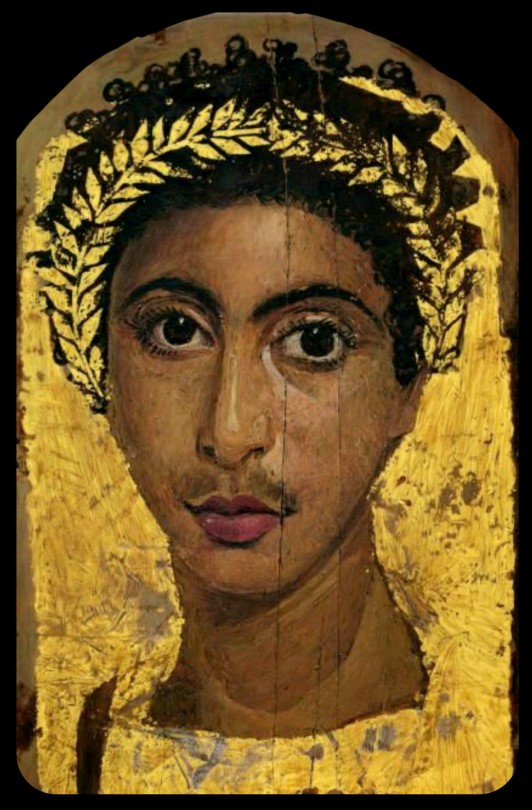
Above: portrait of a youth wearing a golden wreath, c.130-150 CE; the wreath and the background of the portrait are both gilded
The population of the Faiyum Delta, where most of these portraits were found, largely contained individuals with both native Egyptian/North African and Greek heritage. The Greek lineages can be traced back to the Ptolemaic period, when the Greeks gained control of Egypt and began to establish settlements throughout the region, gradually leading to a cultural diffusion between the Greek and Egyptian populations. The Romans eventually took control of Egypt in 31 CE, absorbing it into the Roman Empire and colonizing much of North Africa, but the demographics of the Faiyum Delta remained largely unchanged.

Above: portrait of a man with a mole on his nose, c.130-150 CE
Many of these Fayum portraits reflect the same blend of ethnic and cultural roots, depicting individuals with both Greek and native Egyptian heritage (a claim that is supported by both archaeological and genetic evidence). Some portraits may also depict native Egyptians who did not have any European ancestry, but had been integrated into Greco-Roman society.

Above: portrait of a bearded man, c.170-180 CE
These representations of native Egyptians provide us with unique insights into the actual demographics of Roman-occupied Egypt (and the ancient world at large). Non-European peoples are rarely included in depictions of the classical world; it's also interesting to see the blend of cultural elements that these portraits represent.
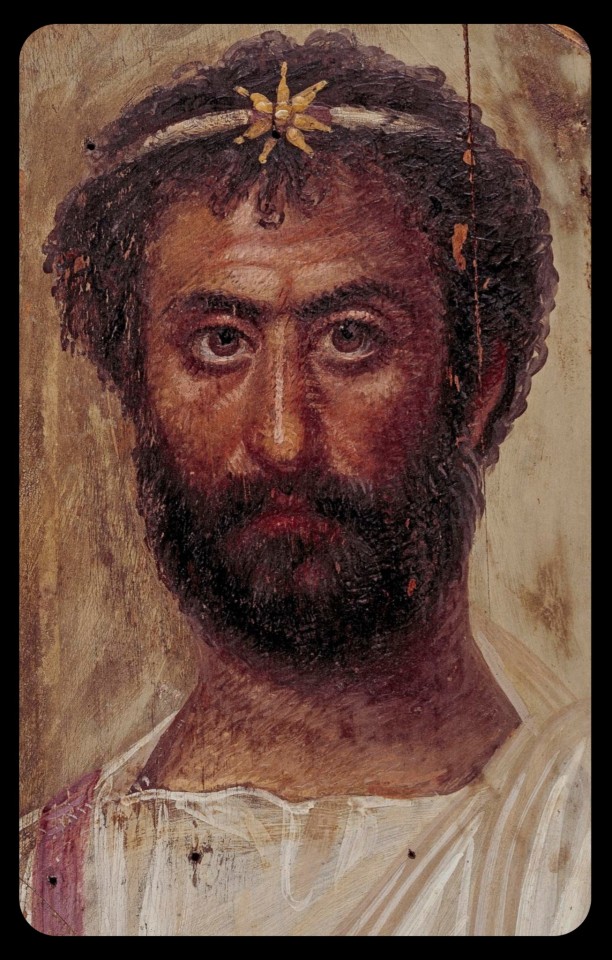
Above: portrait of a priest of Serapis, c.140-160 CE; the man in this portrait is shown wearing a fillet/crown that bears the seven-pointed star of the Greco-Egyptian god, Serapis
As this article explains:
In the 1800s and early 1900s, Western art historians didn’t know what to make of these portraits. Scholars of Roman history labeled them Egyptian. Scholars of Egyptian history labeled them Greco-Roman. These binary academic classifications failed to capture the true complexity of the ancient (or, indeed, modern) Mediterranean. In reality, Fayum portraits are a syncretic form, merging Egyptian and Greco-Roman art and funerary practices. They reflect the cosmopolitanism of both Roman and Egyptian history.

Above: portrait of a man, c.80-100 CE (left); portrait of a bearded officer, sometimes referred to as "Perseus," c.130-175 CE (right)
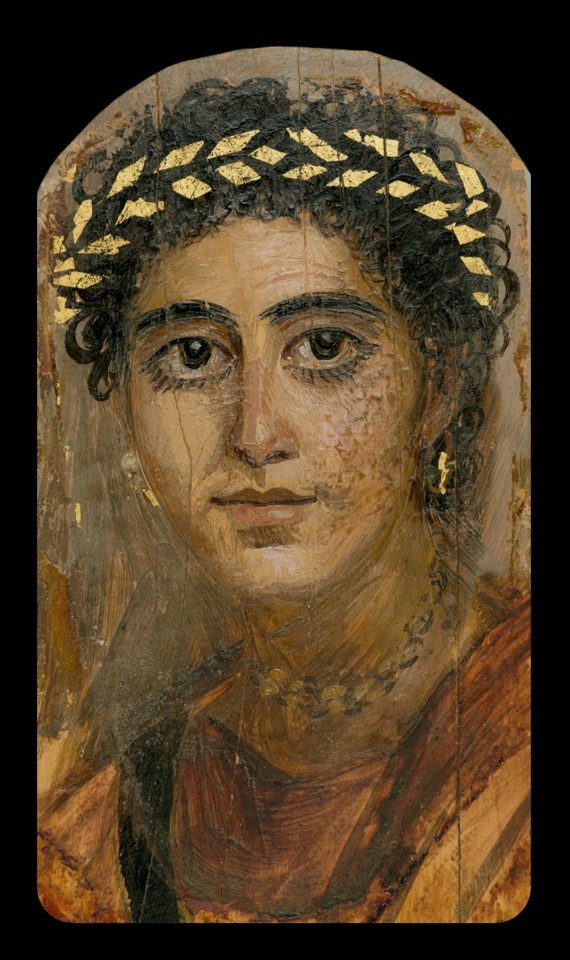
Above: portrait of a young woman in red, c.90-120 CE
Nearly 1,000 of these portraits are currently known to exist.
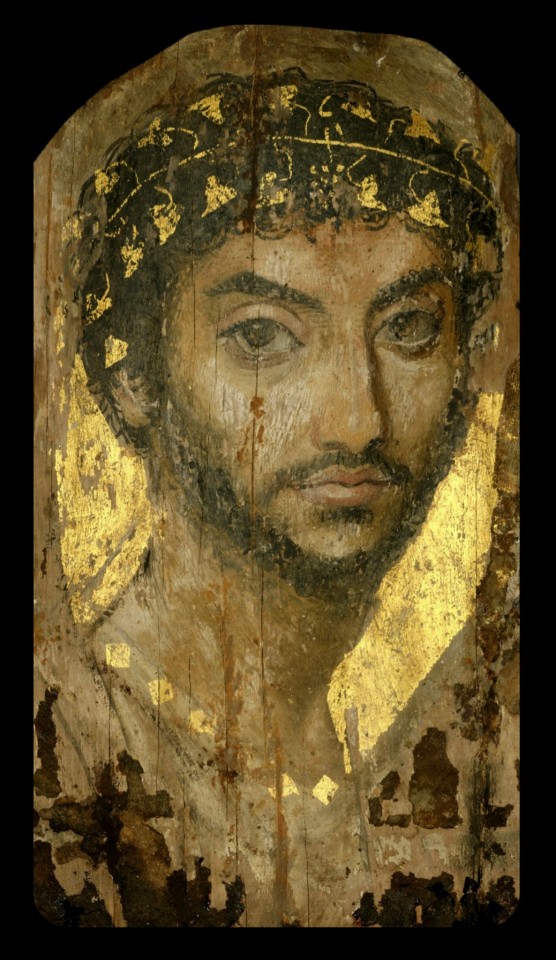
Above: portrait of a man wearing a gilded ivy wreath, c.100-150 CE
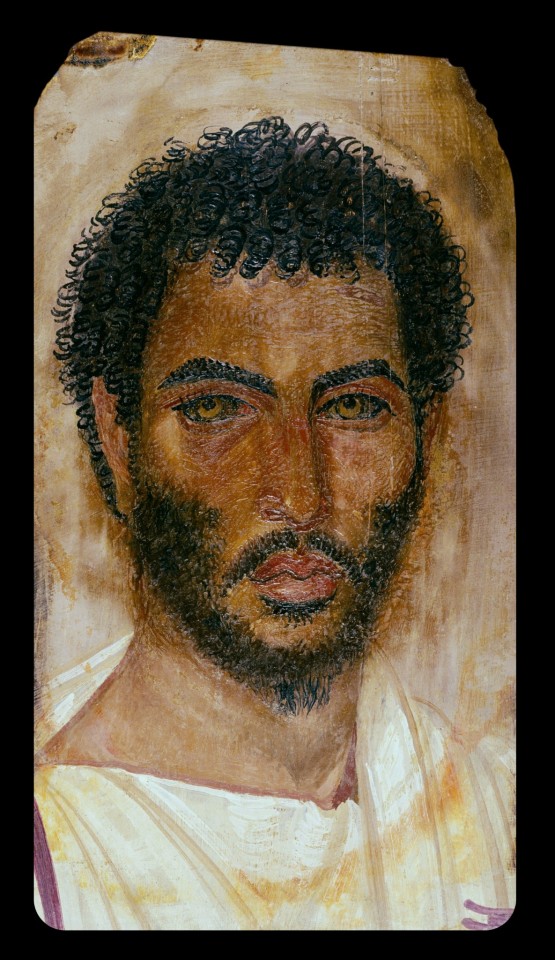
Above: portrait of a bearded man, c.150-170 CE
Sources & More Info:
Curationist: Fayum Portraits
Harvard Art Museums: Giving the Dead their Due: an Exhibition Re-Examines Funerary Portraits from Roman Egypt
Getty Museum: APPEAR Project
Getty Museum: Faces of Roman Egypt
National Geographic: Ancient Egypt's Stunning, Lifelike Mummy Portraits
The Athens Centre: The Myth of Whiteness in Classical Sculpture
Forbes: Whitewashing Ancient Statues: Whiteness, Racism and Color in the Ancient World
#archaeology#artifact#anthropology#history#ancient history#art#fayum portraits#roman egypt#ancient rome#ethnography#painting#portrait#north africa#people of color#egypt#religion#greco roman#greek#classical antiquity#fayum#mummy portraits#romano egyptian#representation
445 notes
·
View notes
Text
Global Warming Has Accelerated: Are the United Nations and the Public Well-Informed?
James E. Hansen, Pushker Kharecha, Makiko Sato, George Tselioudis, Joseph Kelly, Susanne E. Bauer, Reto Ruedy, Eunbi Jeong, Qinjian Jin, Eric Rignot, Isabella Velicogna, Mark R. Schoeberl, Karina von Schuckmann, Joshua Amponsem, Junji Cao, Anton Keskinen, Jing Li & Anni Pokela
Pages 6-44 | Published online: 03 Feb 2025
Abstract
Global temperature leaped more than 0.4°C (0.7°F) during the past two years, the 12-month average peaking in August 2024 at +1.6°C relative to the temperature at the beginning of last century (the 1880-1920 average). This temperature jump was spurred by one of the periodic tropical El Niño warming events, but many Earth scientists were baffled by the magnitude of the global warming, which was twice as large as expected for the weak 2023-2024 El Niño. We find that most of the other half of the warming was caused by a restriction on aerosol emissions by ships, which was imposed in 2020 by the International Maritime Organization to combat the effect of aerosol pollutants on human health. Aerosols are small particles that serve as cloud formation nuclei. Their most important effect is to increase the extent and brightness of clouds, which reflect sunlight and have a cooling effect on Earth. When aerosols – and thus clouds – are reduced, Earth is darker and absorbs more sunlight, thus enhancing global warming. Ships are the main aerosol source in the North Pacific and North Atlantic Oceans. We quantify the aerosol effect from the geographical distribution of sunlight reflected by Earth as measured by satellites, with the largest expected and observed effects in the North Pacific and North Atlantic Oceans. We find that aerosol cooling, and thus climate sensitivity, are understated in the best estimate of the United Nations Intergovernmental Panel on Climate Change (IPCC). Global warming caused by reduced ship aerosols will not go away as tropical climate moves into its cool La Niña phase. Therefore, we expect that global temperature will not fall much below +1.5°C level, instead oscillating near or above that level for the next few years, which will help confirm our interpretation of the sudden global warming. High sea surface temperatures and increasing ocean hotspots will continue, with harmful effects on coral reefs and other ocean life. The largest practical effect on humans today is increase of the frequency and severity of climate extremes. More powerful tropical storms, tornadoes, and thunderstorms, and thus more extreme floods, are driven by high sea surface temperature and a warmer atmosphere that holds more water vapor. Higher global temperature also increases the intensity of heat waves and – at the times and places of dry weather – high temperature increases drought intensity, including “flash droughts” that develop rapidly, even in regions with adequate average rainfall. Polar climate change has the greatest long-term effect on humanity, with impacts accelerated by the jump in global temperature. We find that polar ice melt and freshwater injection onto the North Atlantic Ocean exceed prior estimates and, because of accelerated global warming, the melt will increase. As a result, shutdown of the Atlantic Meridional Overturning Circulation (AMOC) is likely within the next 20-30 years, unless actions are taken to reduce global warming – in contradiction to conclusions of IPCC. If AMOC is allowed to shut down, it will lock in major problems including sea level rise of several meters – thus, we describe AMOC shutdown as the “point of no return.” We suggest that an alternative perspective – a complement to the IPCC approach – is needed to assess these issues and actions that are needed to avoid handing young people a dire situation that is out of their control. This alternative approach will make more use of ongoing observations to drive modeling and more use of paleoclimate to test modeling and test our understanding. As of today, the threats of AMOC shutdown and sea level rise are poorly understood, but better observations of polar ocean and ice changes in response to the present accelerated global warming have the potential to greatly improve our understanding.
222 notes
·
View notes
Note
where do you find articles or personal essays to read? and also do you have any favorite sources for news? i want to read more but i’m having a difficult time finding sources 🤍
I've answered this just recently but here's a more complete list for essays from places I visit most often (favourites are marked **)
LitHub**
Electric Literature**
Guernica Magazine**
Hazlitt**
Longreads**
Pangyrus
The Dial**
Bloodknife**
Aeon **
The Marginalian**
Asymptote Journal
N+1
Nautilus**
Quanta Magazine**
The Believer
Ordinary Plots**
The Point Magazine
The Baffler
Paris Review (Redux newsletter is good for things usu behind the paywall)
The New Yorker
The Artifice
The Collector
The Rumpus
Catapult
Tin House Archives (the online section is no longer running but past publications are still available)
Additionally, highly recommend switching to Mozilla Firefox and trying the "Pocket" feature on their homepage: it collects links to articles across the web on topics that are either trending or based on the Pocket suggestions you usually click on. I'm on private browser 99% of the time but there's still 2 or 3 articles at least that I'm always interested in and I love it!
Some other places I read things: Poets&Writers, Atlas Obscura, The Guardian, The Independent, New Scientist, Al Jazeera, The Atlantic, BBC, National Geographic, Wired, NY Times, GQ, NPR, The Irish Times / Independent, etc., I don't have favourite news sources as a rule since I usually read 2 or 3 articles on the same topic from different places depending on what it is (I don't like relying on single sources). But on the whole this covers most of what cross my orbit unless I'm looking for something specifically 💗
2K notes
·
View notes
Text

did you know that ONE disposable pad takes at least 500 years to decompose? (source: national geographic)
say goodbye to endless purchases with reusable pads.
it only takes starting with one pad to see the difference. choose sustainability, choose the future.
1K notes
·
View notes
Text
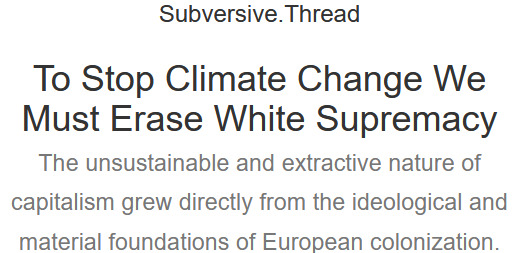

The way most people talk about climate change we are led to believe we all have an equal part in creating the capitalist nightmare we live in, but that’s a lie. The unsustainable and extractive nature of capitalism grew directly from the ideological and material foundations of European colonization. We cannot hold the entire human species responsible for that. It’s victim blaming.
The vast majority of waste is produced by the same people and institutions who hold power. Fighting for our planet, the health of our land, our food, our homes, our communities, is where the fight against capitalism and white supremacy collide. Any fight for environmental justice must also be a fight for racial justice because BI&POC are the ones who disproportionately bear the weight of climate change.
White Settler Colonialism Is Destroying the Planet, Not Poor BI&POC
Don’t believe the Malthusian and eco-fascist myth that there are too many people on the planet to care for. This is a lie peddled by capitalists, eugenicists, and people who advocate for genocide. We know that every landbase has its limit for how much life it can support (indigenous peoples have been saying this for hundreds of years), but “overpopulation” rhetoric is overwhelmingly used as a means to enforce colonial hierarchies where wealthy white people can maintain lives of access and privilege while poor BI&POC barely survive.
Instead of telling poor BI&POC to have less children or to stop wanting better lives, we should build a movement to fight climate change which centers racial justice, abolishes capitalism, and forces wealthy, predominately white populations to stop hoarding resources.
Here are some Earth Day facts for tomorrow so you don’t fall for the lies:
Just 100 companies are responsible for 71% of global emissions. (Source: the Guardian)
Black communities are exposed to 56% more pollution than is caused by their consumption. For Latinx communities, it is 63%. (Source: American Journal of Public Health)
97% of waste produced in the United States is corporate waste. 80% of businesses are owned & operated by white people. (Source: “The Story of Stuff” & US News)
Indigenous peoples make up less than 5% of the planet’s human population, yet they are protecting 80% of its biodiversity. (Source: National Geographic)
The world’s richest 10% produce half of carbon emissions while the poorest half contribute only 10%. (Source: Oxfam)
The world’s wealthiest 16% use 80% of the planet’s natural resources. (Source: CNN)
We are not all equally “responsible.” White settler colonialism and capitalism are destroying the planet, not poor BI&POC.
#climate change#climate crisis#white supremism#community building#practical anarchy#practical anarchism#anarchist society#practical#revolution#anarchism#daily posts#communism#anti capitalist#anti capitalism#late stage capitalism#organization#grassroots#grass roots#anarchists#libraries#leftism#social issues#economy#economics#climate#ecology#anarchy works#environmentalism#environment#solarpunk
204 notes
·
View notes